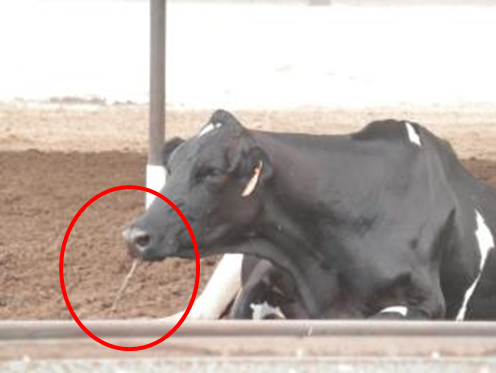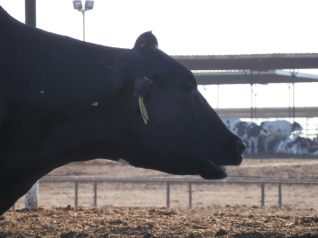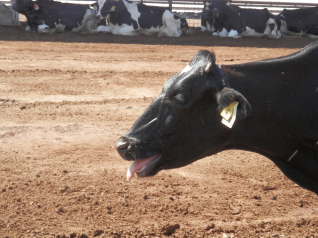Why talk about heat stress and cattle?
Cattle are often raised and kept in warm climates, like California. Cattle are affected by hot weather sooner than humans are for several reasons: they have a higher average body temperature (101.5F or 38.6C) overall and they ferment their food, a process which produces heat.
If cattle are not able to cool down, they will eat less, produce less milk or gain less weight, and in extreme cases, can die. Other problems include reduced fertility in dairy cattle and an increase in some health problems, such as lameness. If recognized soon enough, it is possible to provide abatement.
The goal of this website is to learn to recognize signs of heat stress |
Which animals? Cattle that are highly productive- either in terms of milk or weight gain- are the animals that are most likely to show signs of heat stress. But all cattle may be affected. In a given group, you might only see a few animals showing signs and they can serve as early indicators that the group is experiencing the problem.
When to look? Evidence suggests that we start to see signs of heat stress above 74F or 23C in a range of climates. High humidity can lower this temperature range. A good rule of thumb is that cattle are affected sooner than people will be.
What to look for? Cattle lose heat by increasing respiration rate and, eventually, by panting. Below, we provide examples of how to evaluate these changes.
When to look? Evidence suggests that we start to see signs of heat stress above 74F or 23C in a range of climates. High humidity can lower this temperature range. A good rule of thumb is that cattle are affected sooner than people will be.
What to look for? Cattle lose heat by increasing respiration rate and, eventually, by panting. Below, we provide examples of how to evaluate these changes.
Respiration rate
For practice identifying these changes, click below:
Panting and other indicators
DroolingSaliva (clear, transparent) comes out of the cow's mouth; cow is not ruminating; any quantity of visible saliva counts as drooling
|
PantingOpen mouth; space between the lips is visible; cow is not ruminating
|
Tongue OutProtruding tongue; tongue tip or more crosses the lower teeth and it does not touch any body parts (e.g. not grooming)
|
For practice identifying these changes, click below:



